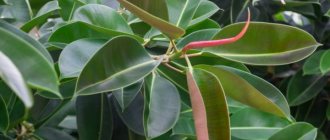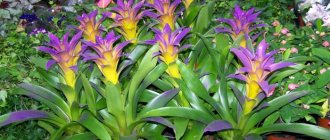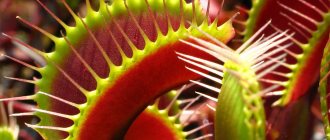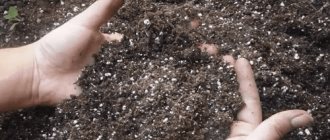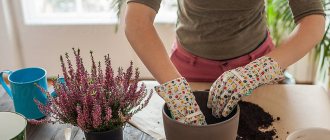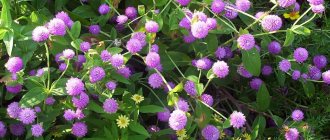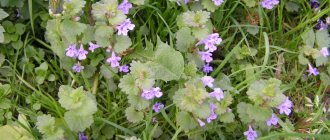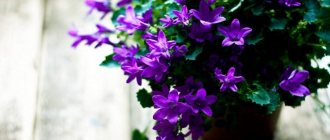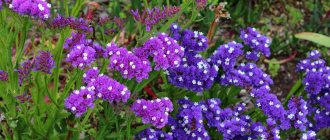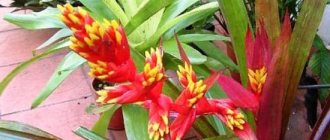Content
- 1. Soil characteristics
- 2. Soil composition 2.1. High peat
- 2.2. Lowland peat
- 2.3. Vermicompost
- 2.4. Sod land
Finding the perfect soil for your favorite indoor flora is like searching for the mystical “Holy Grail” that will instantly make the plant bloom in a lush bouquet.
In reality, the search and selection stories are more similar to fishing ones: if your neighbor is biting (read: grows/blooms better), then his worm (soil) is better. However, the truth is often not buried in the soil, although it is one of the four pillars of proper plant growing, along with lighting, watering and care. What soil is the best? The answer to this question depends on what plant you have on your windowsill. The best soil for an azalea is the worst soil for a desert cactus. Both will be completely unsuitable for aquatic plants. And some plants do not need soil at all (for example, epiphytic orchids or the aerophyte Tillandsia osniformes). However, if we don’t touch exotics, then almost all soils have characteristics that unite them, knowledge of which will help you find the right soil among similar ones specifically for your plant.
Scope of application of universal primer
Universal primer can be used effectively without risk or problems:
Universal soil is an excellent solution and choice for planting various crops and plants. It promotes their rapid germination and development. It also ensures their complete, balanced nutrition, health, and impressive appearance. At the same time, such soil guarantees rapid adaptation of seeds and their easy replanting. Also, universal soil improves fertility and yield, quality and taste of fruits. It accelerates the ripening process, restores the natural process of soil biocenosis, and ensures rapid growth of crops. Does not harm the environment and humans, does not contain chemicals, GMOs, or harmful additives.
Universal primer is stored in original and sealed packaging in dry, well-ventilated areas. It is prohibited to store the mixture near food, feed, or other types of fertilizers. The shelf life of universal primer depends on the manufacturer. Most often, the indicator does not exceed 2-3 years from the date of manufacture.
It's time to draw conclusions: universal soil is a reasonable and necessary purchase, which will greatly facilitate and simplify the life of a gardener and gardener, a connoisseur of well-groomed, stylish flower beds and flower beds.
Source
Soil characteristics
In order not to make a mistake with the choice of soil, you need to know its main characteristics and correlate them with the requirements of a particular type of substrate.
The main characteristics of the soil include:
- porosity and looseness of the soil, which determine air penetration (soil aeration);
- ability to pass moisture (moisture permeability);
- ability to retain moisture (moisture capacity);
- nutrient conductivity;
- acidity level - pH. If Gloxinia, Hydrangea, Dieffenbachia require a slightly acidic environment (pH 6.0–6.5), then Rose, Cineraria, Chrysanthemum require a neutral environment (pH 6.5–7.0), and a slightly alkaline environment is suitable for Adenium and Narcissus. As a rule, the pH is indicated on the soil package.
IN THE PHOTO: Air- and moisture-permeable soil for growing seedlings
Soil acidity for indoor flowers
Soil for Dracaena - which one is needed and how to choose
Knowing which trees and flowers like acidic soil and which ones like neutral or alkaline soil, you can mix the soil suitable for them. Typically, peat soil is acidic, turf and leaf soil are neutral (pH 5.0 - 5.5) or have a slightly alkaline reaction, and clay soils are alkaline (pH 5.5-6.5).
Soil acidity for home flowers
What indoor flowers love acidic soil, list:
- azalea;
- aspidistra;
- bougainvillea;
- ginura;
- blueberry;
- hydrangea;
- dichorysandra;
- camellia;
- coffee;
- laurel;
- vines (gloriosa, passionflower, clerodendrum, hoya);
- oleander;
- palm trees (dracaena, coconut, Livistona, rapis, date, chamedorea, howea, cycas yucca);
- ferns;
- pelargonium;
- rhododendron;
- ficus;
- fuchsia;
- cyclamen;
- Sheffler.
List of plants that like alkaline soil:
- anthurium;
- balsam;
- begonia;
- gloxinia;
- dieffenbachia;
- calathea;
- croton;
- arrowroot;
- rhipsalidomsis;
- selaginella;
- Saintpaulia;
- syngonium;
- skirpus;
- spathiphyllum;
- scindapsus;
- Tradescantia;
- philodendron;
- fittonia;
- cissus;
- Schlumberger.
Plants adapted to neutral soil:
- abutilone;
- aloe;
- albizia;
- amaranth;
- ampelopsis;
- asparagus;
- aphelandra;
- brunfelsia;
- hibiscus;
- hippeastrum;
- dizygotheca;
- Kalanchoe;
- castanospermum;
- coleus;
- lemon;
- myrtle;
- milkweed;
- rose;
- sansevieria;
- sedum;
- syngonium;
- cineraria;
- eucalyptus.
Soil composition
To make the right choice, you should pay attention to the composition of the soil mixture. It determines how often watering, replanting, fertilizing and their quantity are required.
High peat
High-moor peat (a product of the decomposition of sphagnum growing in raised bogs) is part of most soils. It is widely used in its pure form for cultivation both in private, indoor culture and in agriculture. High-moor peat is characterized by high moisture capacity, breathability and lightness. It is these properties that made it a leader among other primers. An additional “bonus” for residents of regions with hard water in the water supply is the acidic environment of peat. It moderately neutralizes salts when watering, although this effect is short-lived.
Indoor plants are rarely grown on pure peat, because it is extremely poor in nutrients. In addition, unwatered peat has difficulty absorbing moisture. Those who use soils based on high-moor peat know what a headache watering such a substrate becomes. The pot with overdried soil should be placed in a basin of water and wait until the peat has collected the required amount of moisture.
Lowland peat
Lowland peat (obtained from low-lying bogs, wetlands) is rich in nutrients. That is why it is used mixed with high-moor peat as part of the most popular soils for indoor plants. In its pure form, lowland peat is not used at all: due to its fine structure, it is quite “heavy”, quickly cakes, retains water and has low air permeability. This factor can play a cruel joke, for example, with aroids, the roots of which are easily damaged due to stagnation of water.
Vermicompost
Vermicompost – also known as simply “humus” – is very popular both as an additive to soil mixtures and as a separate substrate (usually in garden farms). It is surrounded by a lot of myths and bears the title of “super soil for all plants.” In fact, the “bio” prefix was added by marketers, and humus itself is nothing more than rotted plant residues that make up the top nutrient layer of the soil.
It is very good if the store-bought soil contains humus from a region with nutrient-rich soils (such a “region” could be former agricultural land, a state farm, or a “cow barn”). But most often it’s a “pig in a poke.”
Even good, nutritious humus in its pure form has certain disadvantages: it has low air permeability (not immediately, but as it cakes) and high moisture capacity. Plants grown in a substrate on “vermicompost” need to be watered less frequently, and the top layer needs to be loosened more often.
Sod land
Similar to “vermicompost”, the glory of turf soil is popular among people. Sod is the root-inhabited part of the soil. As with humus, turf soil can be different, which means it is impossible to talk about a single quality standard for such soil. Its quality depends on the specific location: if on the territory of abandoned collective farms/state farms the turf soil is good, then in the field it is not so good. The main disadvantage of turf soil is the need to remove residues of other plants, followed by steaming to remove possible microorganisms.
For independent experiments, it is better to use soil from garden farms where fruit trees are cultivated. “Coniferous soil” is very popular - it is light, aerated, has a slightly acidic reaction and is in many ways similar to peat, although it does not dry out so much that you have to soak the pot with the plant for hours. Almost any sod-leaf soil is relatively poor in nutrients (or slowly releases them).
IN THE PHOTO: Peat tablets
Tips for choosing soil
In order to get a large harvest at the end of the season, the soil must be selected appropriately. And here are some recommendations on what you should pay special attention to before purchasing a particular brand.
Let's start with the structure. The soil mixture must be homogeneous. No stones or pieces of wood are allowed. There will definitely be no benefit from all this.
In second place is cost. It's worth thinking about before you grab a package at an extremely low price. Thus, there is a possibility of stumbling upon a product of dubious quality. The price reduction occurs due to the replacement of peat with soil, which is inherently considered waste from commercial greenhouses.
Third on this list is the size of the substrate itself. There is no definite recommendation on this matter, you just need to know that a large substrate dries out quickly, and a small one has a tendency to acidify.
In fourth position is consistency, which plays an important role. Professional gardeners prefer a loose texture. It is most favorable for seed growth.
And the last thing you need to pay attention to is the production date. It is best to choose fresh soil. If, for example, you use last year’s soil, then, alas, nothing useful can be extracted from it, because all the nutrients have been lost this year.
Several basic rules for selection were presented for consideration, the rest remains at the discretion of the consumer.
Now, let's move on to a review of the best samples.
Additional components in the soil composition
Auxiliary substances in the soil mixture are like lifesavers for amateurs and professionals. Some improve soil looseness, others increase moisture permeability, and others protect against excessive moisture.
Below we will touch only on the most popular ones:
Vermiculite is a natural mineral that holds water well (up to 200-300% of its own weight) and slowly releases it along with dissolved minerals. It is used as a component of soils for hydroponic growing of plants, for growing seedlings, and in its pure form for rooting cuttings of Peonies, Roses, Chrysanthemums, Aloe.
Perlite is nothing more than volcanic glass, which becomes light and porous during heat treatment. It is used by almost all greenhouse growers and therefore often frightens buyers who think that these are insect eggs or part of the mythical “transport soil”. Perlite gives the soil greater looseness and breathability. It is added to substrates and used in its pure form for growing seedlings.
Coconut fiber, coco soil or coconut shavings (or chips) are all products of processing the fruits of the coconut palm. The fiber is the long “strands” of the coconut shell. Coco soil can consist of fine shavings and so-called “chips” - parts of a larger fraction. Both are a product of processing the middle shell of a coconut.
The large fraction is more often used by terrariumists to create bedding for amphibians. The fine fraction received the general name “cocosoil” and began to enjoy enormous popularity primarily in the West. Coco soil is worthy of a separate publication, but here we will add that it is an ideal component for creating loose, moderately moisture-absorbing soil for almost any non-aquatic plant. Pure coco soil is used in hydroponics because... does not contain nutrients and allows you to create individual nutrition. Coconut fiber is used for growing orchids, ferns, bromeliads, and succulents.
River sand, which increases moisture permeability and prevents caking of the substrate, is widely used for palm trees, cacti and succulents. For bulbous plants, sand can be a kind of “cushion” that protects the bulb from excessive moisture. However, you should be wary of sand accumulation in the ground, because... when moistened, it does not allow oxygen to pass through easily.
Sphagnum moss with its high hygroscopicity is simply irreplaceable in substrates for epiphytic orchids, Azalea, Saintpaulia, Gloxinia, Anthurium, Aglaonema. In addition, he can help out if you need to leave for a few days. Wet sphagnum moss placed in a pot will gradually release moisture to the plant.
Charcoal - increases the looseness of the soil; it is also able to absorb excess moisture and slowly release it. However, its main property is antifungicidal and antiseptic. It prevents the development of fungi and the formation of rot. That is why it must be mixed not only with the soil, but also with the drainage layer. Charcoal is an essential component of soils for orchids, arrowroot, bromeliads, and aroids.
Dolomite chips or flour are a popular soil deoxidizer. It is often used in mixtures with high peat to reduce the acidity of the latter. A soil mixture with peat-based dolomite flour becomes more suitable for plants that prefer a neutral and slightly alkaline reaction: many types of palm trees, cacti and succulents. In addition, this additive enriches the soil with magnesium, which is especially necessary during the active growing season.
Please note : in inexpensive brands of soil, dolomite flour is replaced with ordinary chalk. It copes well with the main task of reducing acidity, but does not transfer nutrients into the soil.
IN THE PHOTO: Growing Saintpaulia in sphagnum
Recently, hydrogel (otherwise known as aquasoil) has been widely used as a moisture-retaining additive in soil. It is used when growing seedlings and potted plants. This polymer ingredient ensures maximum soil breathability and reduces the need for watering by 3-6 times. In some cases, the hydrogel itself can act as a primer. In the granules that swell after contact with water, cuttings take root well and cut flowers do not wither for a long time. In addition, in tandem with liquid fertilizers, Dracaena, Cordyline, Guzmania, Chlorophytum, Lily, Fuchsia, Syngonium, Schefflera, Maranta grow happily in such aqua soil. Hydrogel, unlike conventional primer, can be used without changing for 2 years.
IN THE PHOTO: The hydrogel is easily colored with natural safe dyes and can look very attractive in glass vessels
Buying ready-made soil in a store
Today you can buy several types of soils in stores:
- universal (for example, flower soil.) This is a more economical option if plants with similar conditions live on the windowsill and are not very demanding on the quality of the substrate.
- special soils intended for a specific species (for example, soil for palm trees, Begonias, Saintpaulia). This option is more preferable, as it takes into account the needs of a particular plant. However, it is necessary to pay attention to the composition and characteristics described above.
When choosing between domestic and foreign-made soils, it is better to give preference to the latter. In Russia, foreign soils include soils from German manufacturers. They are made on the basis of high-moor peat with the addition of perlite, vermiculite and essential minerals (nitrogen, phosphorus, potassium) and trace elements (iron, manganese, zinc, boron, etc.).
IN THE PHOTO: A popular brand of high-quality German fertilizer, available for purchase in Russia and the CIS
If you were not able to become the happy owner of such soil, then you can simply improve the store-bought mixture with the additives that we wrote about above, with adjustments to the requirements of a particular plant. The soil requirements for individual flora representatives can be viewed in our catalog.
Most domestic soil mixtures are made on the basis of humus soil with the addition of sand. If you add peat and perlite to it, it will acquire a slightly acidic reaction and become light and breathable. This soil is suitable for most indoor plants. If you need to increase the pH of the soil, then you need to add dolomite flour or chalk, as well as perlite, to the peat (if it is the basis of the soil). Neutral and slightly alkaline soil is more suitable for succulents and some desert ones.
IN THE PHOTO: Soil air permeability affects the penetration of nutrients to the roots
How to make acidic soil at home
There are several ways you can increase soil acidity at home. Loose soil is acidified by adding a significant portion of organic matter: compost, pine needles or sphagnum. Among mineral compounds, colloidal sulfur can be used.
Acidification of soil with citric acid
You can also acidify the soil mixture for indoor plants using improvised means. For example, how to acidify the soil with citric acid? To do this, take citric acid at the rate of 1-2 teaspoons per 10 liters of water, and pour this solution over the substrate.
To successfully grow various plants in an apartment, especially those coming from tropical places, it is imperative to take into account their needs for the composition of the soil. By learning how to properly mix the soil and acidify it, you can grow almost any plant on your windowsill.
The right soil with your own hands
If it is not possible to buy really high-quality soil or the substrate is required in large quantities, you can prepare it yourself.
To create the correct soil per 10 liters you will need:
- High-moor peat - 7 l or 5 l (more peat is necessary for plants that prefer an acidic reaction, as well as in cases where you want to fertilize plants less often);
- Coco soil (fine fraction coconut shavings) - 2 or 4 liters, respectively (the more coco soil is used, the more often the plant will have to be fertilized, since coconut shavings do not contain nutrients);
- Perlite - 0.7 l;
- Vermiculite - 0.3 l (if the cocosoil content is high, vermiculite is not required, perlite is added instead).
This instruction is not ideal, since it requires the owner to more carefully (compared to using store-bought soil) control over the amount of fertilizer and use it more frequently. We remind you that coco-soil does not contain any nutrients, and high-moor peat contains a small amount of them. With an increased content of these substrates in the soil, the use of fertilizers is required more often. The mixture can be improved if, at the stage of soaking the coco-soil (which is mandatory), diluted fertilizers are used. Their concentration depends on the plant's need for nutrients. For demanding crops (bromeliads, ferns and palms), the concentration is reduced to 1:2. For undemanding species (Azaleas, Heathers, Camellias) - up to 1:4. If the soil is chosen correctly, the root system develops actively, taking over the space of the pot.
IN THE PHOTO: Hippeastrum bulb grown in universal store-bought soil and coco soil. Photo from the site - frauflora.ru
Universal soil: what plants is it suitable for?
A beautiful, neat garden, vegetable garden and even a home flower garden is not only the pride of any owner, but also a huge amount of effort and painstaking work. As well as the correct selection of soil, fertilizers, regular and comprehensive care. In this matter, every detail matters, this is especially true in relation to the selection of soil. The final result of your efforts, the health, appearance and fertility of the plant will depend on it, along with light, water and carbon dioxide. Today we’ll talk about universal soil, what it is and when the use of such soil will benefit your plants.
A few final tips
- When choosing soil, it is better to choose a substrate for a specific plant (for example, “soil for azaleas”) rather than buying universal soil mixtures.
- At the same time, when choosing between Russian soil for a specific plant (“for palm trees”, “for violets”) and German universal soil, it is better to give preference to the latter. They are truly versatile.
- Using additional additives will help you improve soil quality and accelerate the growth and development of the root system.
- You can prepare high-quality soil yourself, which is ideal for your species.
- If you are striving for better results in crop production, pay attention to coco soil. It can be an excellent replacement for conventional soils.
- Hydrogel will help you in growing moisture-loving species.
Pros and cons of universal primer
Universal soil has a number of significant advantages over ordinary soil. The advantages of such an admixture include:
Another important advantage is that universal primer is convenient to use; it does not require active or additional processing. Caring for plants in such soil is simple and ergonomic, and does not take much time. The universal soil stimulates well the development and active growth of the root system and restores the decorative properties of plants. With its help, you can bring weak, sickly plants back to life. But even despite the significant and significant advantages, universal soil also has its certain disadvantages. Lack of care, problems with growing crops and other shortcomings also arise in this case.
In order not to make a mistake with your purchase and thereby not spoil the plants, use the tips on choosing a universal soil.
